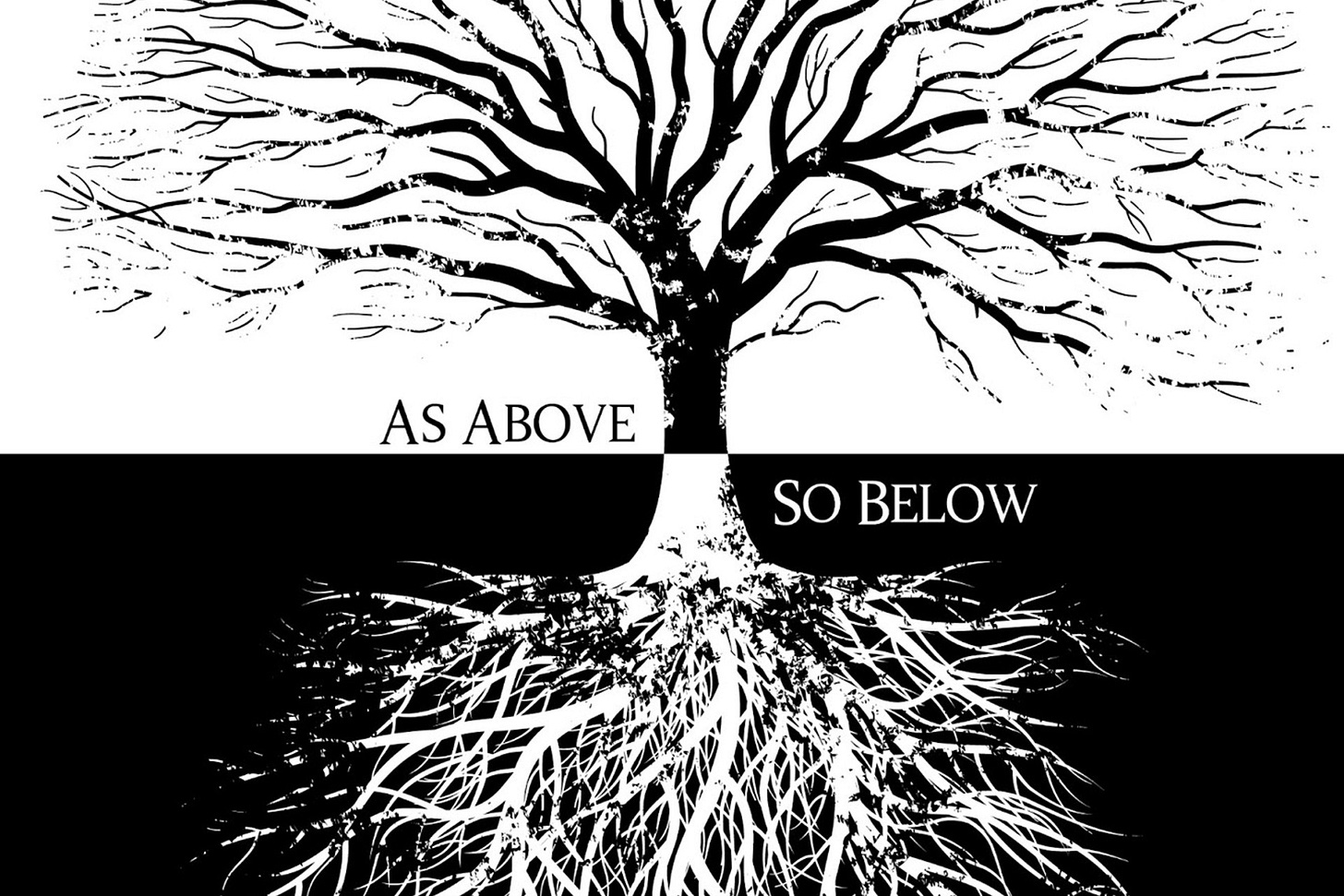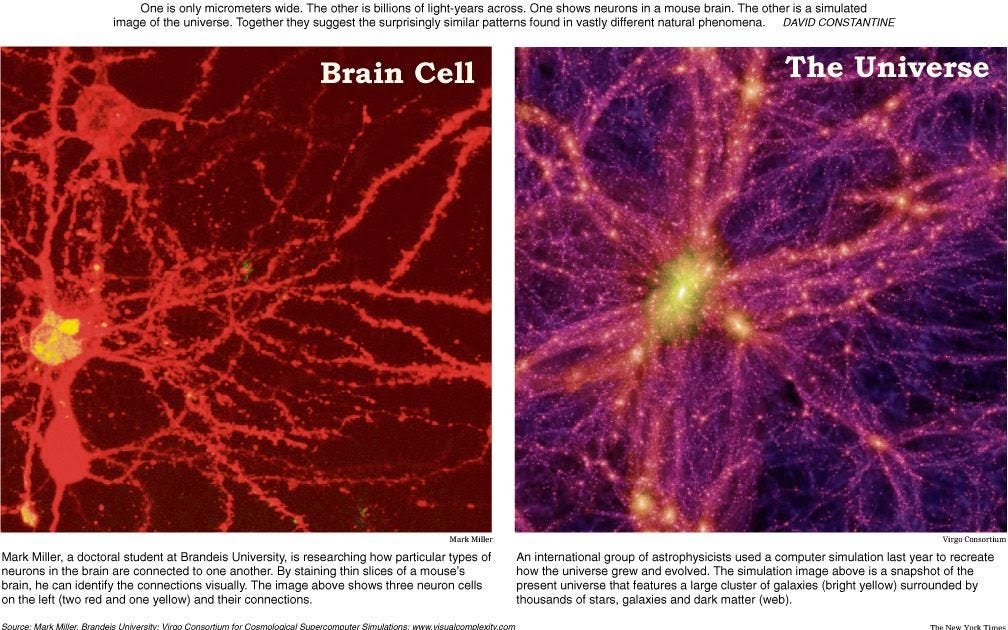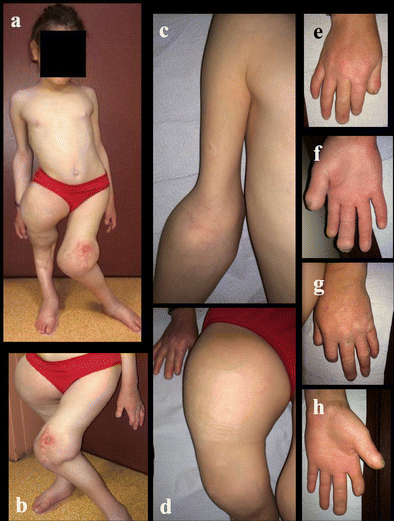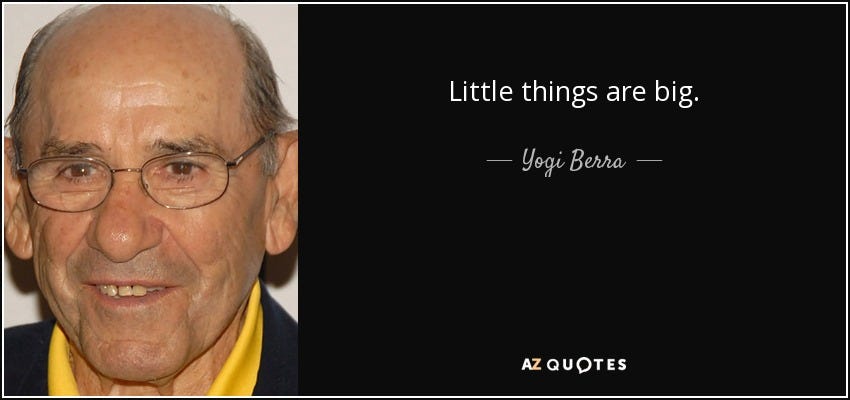Autism: Meaning & Maneuvers
Achieving First Principles Healing
So many more people are on the autism spectrum every passing day.
Maybe all of us are.
How would we even know what normal is, if no one left alive is really normal compared to our ancestors?
For one thing people used to be able to put up with a great deal more pain and discomfort. Quite naturally: as they were just hardened to it by a lifetime of what we would now consider constant suffering. Even in third world countries today all manner of dental and surgical procedures are commonly done without anesthesia, even on children (I’ve experienced this first hand and it became quite clear that the experience of pain is complicated, involving physical, social and psychological factors like the expectation of pain by both the inflicter of some injury, that would in many situations lead to it, and the one experiencing, or not experiencing it).
In addition to their tolerance for discomfort our ancestors could sit with rapt attention through multi-hour debates and speak spontaneously at a level not found outside classical literature, let alone any contemporary off-the-cuff speech.
Now, we’ll come back to discomfort tolerance and communication in a moment, but first I would like to submit that there is a deeper meaning to everything that happens in accord with the ancient aphorism: as above, so below.
If we find a problem at one level, like the mental, the same problem will be reflected at every other level great or small: physical (biochemical, epigenetic, hormonal), emotional, psychological, energetic, spiritual, societal, etc.
I know it seems I’m all over the place, but bear with me. After briefly introducing autism, we’ll combine all these seemingly disparate ideas:
Autistic children cannot deal with even the most innocuous seeming stimuli. They cannot interpret incoming signals appropriately and they cannot communicate back to the world at large.
They are hypersensitive and at the same time shut away so deep inside such a thick shell that they can’t be reached, or reach anyone else.
What’s the connection between these two seemingly opposing symptoms and what might it all mean?
Since the Industrial Revolution all of us in advanced societies (much more likely to be affected by autism) have experienced a dramatic increase in comfort and security (the myriad services now available at the touch of a button put to shame the luxuries of ancient emperors) along with a corresponding rise in distaste for any discomfort leading to society-wide anesthetic, bandaid approaches to every discomfort or dis-ease.
The problem with a bandaid for a festering wound is that the wound keeps festering, in fact it worsens over time.
Anyway, getting back to autism, the key to understanding the link between the two signal symptoms of hypersensitivity and the inability to communicate, is that pain/discomfort is itself a message without which we cannot safely navigate the world - just ask any diabetic with numb feet about the immense degree of self-care and vigilance required to still have feet every year.
PAIN MESSAGING
Lack of pain receptors would rapidly lead to progressive dis-ease and death as you could not avoid what is harming you, in fact you wouldn’t even know if something was harming you.
Pain is meant to communicate the danger of continuing to do what is causing the pain, because it is damaging you. The instinctive response to pain is to flinch away from it, to somehow put a stop to the source of pain.
Congenital Insensitivity to Pain (CIP) is a rare genetic disorder that illustrates the problem:
“From an evolutionary perspective, one of the reasons scientists believe CIP is so rare is because so few individuals with the disorder reach adulthood. “We fear pain, but in developmental terms from being a child to being a young adult, pain is incredibly important to the process of learning how to modulate your physical activity without doing damage to your bodies, and in determining how much risk you take,” (Dr Ingo) Kurth (who studies CIP) explains.
“Without the body’s natural warning mechanism, many with CIP exhibit self-destructive behaviour as children or young adults. Kurth tells the story of a young Pakistani boy who came to the attention of scientists through his reputation in his community as a street performer who walked on hot coals, and stuck knives in his arms without displaying any signs of pain. He later died in his early teens, after jumping from the roof of a house.
““Of the CIP patients I’ve worked with in the UK, so many of the males have killed themselves by their late 20s by doing ridiculously dangerous things, not restrained by pain,” says Geoff Woods, who researches pain at the Cambridge Institute for Medical Research. “Or they have such damaged joints that they are wheelchair-bound and end up committing suicide because they have no quality of life.””
-The curse of the people who never feel pain, by David Cox
Modern industrialized people have become enabled to mirror CIP patients to a limited degree. We generally do not allow any pain or discomfort to arise without covering it up, or trying to (rather than dealing with the source itself).
COMS DOWN
Walk into any pharmacy and you’ll find bandaid remedies for: headaches, coughs, colds, rashes, pink eye, ear aches, reflux, allergies, tummy aches, constipation, diarrhea, period discomfort, and in the back, accessible only via prescription will be the bandaids applied to what comes of using the more accessible bandaids on the above laundry list of complaints: hypertension, heart disease, asthma, COPD, autoimmune diseases, cancer, etc.
It only stands to reason we will experience some sort of negative consequences for interrupting the crucial, natural feedback loop of pain.
The minor complaints most of us develop during childhood or shortly thereafter are just precursors to the more severe ones, the early warning signs if you will.
And we don’t just paper over physical complaints but emotional, psychological, energetic and spiritual ones as well - all are covered up as soon as they arise. None are addressed at their deepest roots.
Modern infrastructure and technology have allowed us to feel less and less of the natural world, to provide a greater and greater buffer between ourselves and our environments, both external and internal.
As we’ve become accustomed to more and more comfort and convenience we have shied more and more away from any discomfort or inconvenience.
Modern medicine does nothing so well as smother the bodies ability to communicate pain to us, at least for a time.
Constant access to modern media and infrastructure in general (temperature control, pharmacies, restaurants, clubs, movie theaters, parks, so many things to buy and see and do to distract you) does nothing so well as allow us to smother our body’s, heart’s and mind’s abilities to communicate physical, emotional and mental/psychological pain to us, at least for a time.
However, over time the pain not only comes back, but it comes back stronger and stronger yet again as it is constantly beaten back time and again, eventually overcoming our ability to muffle its message, or shifting to a new more painful message, in the form of some new more severe ailment.
An “autism-lite” society is the outcome of a constant progression away from any experience of discomfort and the healthy communication it teaches.
We are progressively more unable to withstand even the slightest discomforts and unable to communicate appropriately to the outside world in return because we are not used to listening to the feedback the world is sending us, including what’s coming from the other people in it.
We are meant to be in communication with everything all the time.
If it gets hot out our bodies respond by doing something that communicates to our brain to respond in some way to the environment at large: we feel the heat, we sweat, we seek shade, we rest more in the midday, we drink more. Those responses are a communication to the world and to ourselves. If the responses are natural and spontaneous we will be in a synchronized, healthy and balanced state. If unnatural or unnaturally automated (temperature control, or worse just ignoring how we feel) we will be out of sync, unhealthy, imbalanced.
In the natural state if it gets dark, our entire physiology goes down with the sun and we sleep.
If it gets light all our hormones rise with the sun and we wake up.
If someone gets upset with us, we suffer emotional discomfort and address the way we interact with them that has led to their being upset, or if we’ve really done nothing wrong then assess and deal with why we feel guilty as though we have, or why we can’t stand up for ourselves as we should.
The ability to communicate eloquently in so many ways is what makes us human.
Speech is what separates us from the animals.
Speech, like all communication is a two way street. If one way is always blocked the other way won’t properly develop.
Even if only positive signals are accepted and not negative ones we’ll develop dysfunctional communication, but in practice numbing the negative also numbs the positive (one of the many unfortunate “side effects” of “anti-depressants”).
When we can’t communicate properly we won’t be able to avoid harming ourselves in our “relationships” to everything in our environment since there will be no intact negative feedback system.
And perhaps most importantly communication ability can continue to develop over time, regardless of age. We can always become more and more sensitive.
When we start listening carefully and acting on what we learn, we will uncover deeper layers, learn more, and eventually develop subtle and not so subtle feedback loops that gently guide us away from what is harming us, and towards what benefits us.
Of course there’s also a lot going on mechanistically with autism, but maybe it all follows the same theme.
Perhaps it all illustrates the idea that what’s present at one level is reflected at every other.
Interestingly, the other things that naturopaths and functional medicine healers have noticed contribute to autism (and other modern chronic diseases) also disrupt a human beings incredibly complex, sophisticated, intricate, and oft-times delicate communications systems:
Toxins like those found in vaccines, heavy metals, chronic infections/infestations, exogenous hormones, chemical laden water/air/food, light after dark, unnatural EMFs, inappropriate or excessive negative emotions and toxic relationships, etc.
Also nutrient deficiencies of vitamins, minerals, phytonutrients, sleep, sunlight, positive emotions and beliefs, healthy intimacy, a connection with the earths bioelectrical fields, nature in general, etc.
So, in the modern world, in a number of ways (physical, mental, emotional, energetic), we have quite successfully shut ourselves down from feeling anything real. We’ve metaphorically plugged our ears from hearing the increasingly frantic and emphatic communications from our own bodies belying their discomfort with a constant toxic barrage and chronic nutrient deficiencies.
The louder the messages get the more mightily we mute them, increasing our medications, ruminations, dissipations (could ADHD, OCD, panic disorder and more actually be somewhere on the “spectrum” too?).
In place of Nature’s messages we have shut her out and covered her up, while we injected and affected ourselves with all manner of unnatural, alien and unintelligible messages that our bodies, hearts, minds and souls were never meant to be exposed to and cannot properly interpret or respond to.
At a deeper level perhaps our discomforts reveal our very selves. What makes you uncomfortable says something about who you are (there is a spiritual maxim that teaches other people are a mirror for you. What annoys you about them points to your own imperfections).
Pain is the great teacher.
It teaches you about yourself and everything else.
When I spent years covering up my headaches with painkillers I was little aware of why I got them, and had no pressing reason to figure it out.
When I understood that pain is not bad, in fact it’s good, ie the headaches were there because my body was trying to protect me from harm, I swore off the painkillers and started to experience them without an easy out.
I quickly came to understand many of the factors involved (hunger, stress, missed sleep, anger, constipation, etc) and was highly motivated to take care of them.
I had struggled to control anger outbursts for years, but when I now finally made the connection that they often led to headaches that I just had to suffer my way through without a painkiller, the anger quickly became severely disincentivized and naturally began to dissipate.
Similarly I became more careful about combining any of the factors involved in germinating headaches.
Imagine my surprise when I later realized that NSAIDs like my goto high dose Motrin/ibuprofen actually contributed to two of my main triggers: anger and constipation (in addition to engendering in some people: depression, anxiety, paranoia, and psychosis. By the way in case you’re wondering, Tylenol is no better).
Everything is connected: numbing yourself out physically numbs you out emotionally, but rather than leaving you numb your body tries to amplify the signal, the emotions break through even stronger than before, until you stop fighting them and let them out naturally and learn to live with them and deal with them in the moment.
Of course no one’s perfect, least of all me. Sometimes I miss sleep, but if I do I better make sure I don’t also skip a meal and let myself get too stressed out or angry the next day. Maintaining a relatively healthy balance keeps the headaches at bay. And over time I have become more resilient. I rarely get headaches anymore and when I do they are much less severe than they used to be when I regularly medicated them (that drop in severity happened relatively fast too, within a few weeks).
I went from being numbed out and stumbling through life harming myself at every turn, completely unaware of important negative feedback loops, to waking up and realizing what was happening.
Syed Haider has entered the chat.
I had finally joined the conversation.
The world is speaking all the time and no one is listening.
The utter extremity of our societal condition is the autist whose parents, society and industrialized world have transferred their communication dysfunctions at every level to one particularly sensitive to them and because of that their epigenetic, biophysical, biochemical, emotional, psychological, energetic and perhaps even spiritual planes are all incomunicado.
They are not just “neurodivergent”, they haven’t just veered onto another course, they are missing from the map.
It’s not the only way to go missing, we all go missing all the time: into our phones, laptops, TVs, food, other people, pharmaceuticals, street drugs, you name it we can use it to check out and so we do.
We’re all a little bit autistic nowadays.
Because everything, everywhere, all at once is involved in creating autism.
And all of us are all too human after all (how many “alls” can one fit into a sentence or three?).
But it’s also all just a matter of cause and effect.
There’s nothing inherently mysterious about it. We can list out all the likely causes as I’ve done. Basically whatever has changed for the worst in the last 70 or so years.
And so it can be fixed.
EXITING THE MAZE
It’s complicated, time consuming, difficult; it takes a lot of commitment from patients and caregivers, but the results are astounding, life-changing and so well worth it.
Natural, comprehensive autism (and other severe chronic disease) treatment is now available at mygotodoc (patients will be able to choose to see either me or Hakim Shabaz for the consults, but we will both work together on every case).
In the past we’ve made our asynchronous consults available without charge for anyone who needed them and couldn’t pay our already low fees (our prescription fees plus partner pharmacy fees, when combined, are always the lowest in the industry).
But now, for the first time ever, our 1 on 1 consults for comprehensive natural healing will be done on a pay what you can basis. And they will be longer than any consults we’ve offered before at 2+ hours for the intake. Because that’s the only way to get to the bottom of things in highly customized care plans, and convince patients of what needs to be done.
However it’s important to realize that regardless of ability to pay or not, deep healing is always quite dear compared to a cheap bandaid (then again bandaids don’t work, so it doesn’t matter how cheap they are).
You always get what you pay for, even when you can’t pay, because everyone who wants an unusual, outstanding result has to sacrifice something dear in the end, whether or not that includes money, it will usually include time, habits, beliefs, plans, comforts and whatever it takes to divert some resources towards enabling the natural protocols (though much less than most would expect given the results).
If you or someone you know has autism, it’s OK.
Roll up your sleeves, check your assumptions at the door, be ready to work, and you’ll not only help yourself, you’ll help many others by your example.
If you’re reading this, it’s not too late, in fact you’re just in time to join the party, and get to know yourself and everyone else in ways you didn’t think possible.
“…we've been able to assist (many) autistic children in achieving sustainable, long-term improvements. Additionally, many others grappling with conditions like ADD, ADHD, and similar challenges (depression, anxiety, panic disorder, psychosis) have benefited from our approach…
“However, there was one particular case where we couldn't achieve the desired outcome. This was primarily due to the parents' expectation of immediate results within a couple of months. Regrettably, they lost hope prematurely, compounded by the fact that the patient was a teenager. As the child gets older, the challenges in treatment tend to intensify.
“It's crucial to recognize that as autistic children mature, the complexities of treatment tend to heighten. Hence, it becomes even more imperative to uphold patience and perseverance in our pursuit of solutions.”
-Hakim Shabaz Ahmed
I know this all may sound like philosophical mumbo jumbo, but it’s grounded in reality, and proven by practical experience.
Autistic children are the canaries in the coal mine warning us where we are all headed if we don’t stop this runaway bullet train in its tracks.
It can seem as though there’s no choice, but you can get off that train even if no one else does.
Again, it’s important to stress that there is a cause and effect relationship in autism as in all diseases, and there are only so many possible causes.
Whatever those causes are they can be removed and the body and brain will right themselves over time.
Some of those causes, like the anger triggering my headaches, may seem inconsequential to some people and yet they may be the most important pressure points available to us in fixing the problem.
What may help illustrate the point is a remarkable study done in the Northeastern United States on a town that had half the incidence of heart disease compared to age matched controls in the rest of the country.
Half the people who should have had heart disease had none, but there was nothing apparently different about them or their environment compared to the rest of the country at large.
They smoked and drank and ate and worked too much, were overly stressed, overweight, had bad air, bad water, bad genes, you name it, they had it or did it.
So Harvard went there to study them and discovered their one saving grace was a much higher level of emotional intimacy amongst friends and family.
Enough real healthy intimacy in the heart disease free cohort entirely overrode the negative impacts of everything else.
And it’s not just heart disease where this matters.
The number of intimate relationships someone has is the single greatest predictor of their longevity.
If intimacy can prevent death it can prevent anything else, whether we realize it or not.
And we are in the midst of an intimacy crisis of epic proportions. Over half of mothers of young children are lonely. Nearly two thirds of young people say they are chronically lonely. Small screens and social media won’t fix this, after all they’re partly to blame for causing it.
When it comes to kids, they are far more sensitive in every way and they have not dissociated themselves from their environment and those in it to the degree adults have.
They are on a gradual slide starting at birth, taking them from experiencing everything and everyone as interconnected parts of a whole, to experiencing themselves as separate autonomous beings (this begins between 6-9 months of age, but its not an off-on switch, it’s on a spectrum, black to shades of grey to white).
This means that all children, including the autistic ones, have a much deeper psycho-emotional association with their caregivers, especially their biological parents.
When their parents have problems in their own relationship the child experiences this as a problem within themselves and the most sensitive children will shut down to escape the overwhelming emotional pain caused by that seemingly external conflict.
The same actually happens at the other end of life too, just in a different way.
Dementia can be the ultimate escape from mental pain, which was shunted into physical pain for years, until that became overwhelming and unbearable and the body in it’s fight for self preservation then shuts down the mind to protect against the untenable situation and remain alive as long as possible in a kind of comatose state.
Hakim Shabaz had treated an entire family for various problems and so they asked him to help their mother with dementia. He warned them that the dementia was likely what was keeping her alive, and removing it would uncover something else, that if not properly dealt with could kill her.
They insisted on treatment and her dementia did improve, however she developed cancer which killed her shortly thereafter.
Not everyone is capable of facing their demons and doing what it takes to deeply heal.
Children though are far often far more resilient than the elderly.
Still, treating a serious, intricate and delicate disorder like autism requires really expert guidance that can put together a deeply customized protocol to fit each situation and then navigate rapidly changing circumstances as that protocol is put into effect.
“Autistic children resemble a delicate (house) of cards – any disruption to one aspect can cause the entire structure to falter. It's akin to solving a puzzle, where adjusting one piece may inadvertently affect another. Providing sustainable, long-term solutions for these children requires a physician with extensive experience, one who has navigated through all stages of treatment.”
-Hakim Shabaz Ahmed
Children need close monitoring with ongoing mental, emotional and nutritional support as they age to prevent regression of symptoms due to their predisposition. Some of the deeper causes take a longer time to fully eliminate, eg epigenetic changes that have often been carried down at this point through multiple generations.
There are many people promising parents help for their autistic children. But most focus on simple one size fits all protocols.
It is so appealing to believe that there is an easy way out, like just removing mercury (despite the anecdotes describing sudden onset autism after a shot, removing the final straw that breaks the camels back won’t usually allow healing without addressing all the other straws and more, like rehab).
Sometimes these simple straightforward approaches work, but not always and they don’t always lead to sustained improvements, because the entire modern environment is constantly pushing those susceptible back towards expressing autism.
Not to say that there will always be an epic struggle to maintain improvement.
The deeper the detox and more thorough the support, the longer the remission, the more inertia and resilience will develop. It gets harder and harder over time to push someones being back off balance.
It’s hard to move a boulder at first, but once you get it rolling downhill it will pick up its own speed and eventually become nearly impossible to stop.
Everyone has two choices when healing: they can try pushing the boulder uphill or downhill. Every simplistic solution is an uphill battle against implacable gravity.
SIMPLE {{{SHOCK}}} THERAPY
I interviewed someone once who had seen a child’s autism disappear suddenly after a painful physical trauma.
He was amazed to discover other stories of spontaneous improvements in autistic children, even complete remissions, after unexpected physical traumas like car accidents.
This led to a theory of the cause of autism: certain crucial neurological reflex loops linked to autism symptoms require post birth stimulation to fully develop. When they remain un-triggered by significant pain during and after relatively easy births, this might explain all the typical symptoms.
The therapeutic idea stemming from his theory was that measured application of uncomfortable stimulation might trigger the development of the very missing reflex loops that autistic children require to function normally.
Despite an interesting theoretical framework, I’m not aware of any clinics or practitioners that have put this theory into practice, so there isn’t much real world proof of the efficacy of the proposed “treatment”.
It’s also unlikely to gain much acceptance in a culture like ours that is so opposed to discomfort in any form, not least of all because it hearkens back to uncomfortable episodes in medical history like shock treatments.
To be perfectly clear I’m not advocating shock treatment or anything like it as a general approach for people with autism (again complex chronic diseases like autism require a deeply personalized approach rather than one-size-fits-all).
Regardless, what it does remind me of personally is cold plunging.
If you’ve never gotten into literally freezing water before, you’re in for a tremendous nervous system shock the first time you do it.
If you don’t jump right back out, but try to stay in, your entire body is screaming at you, you’re hyperventilating and your brain rather than being frozen, is on fire. Pain is assaulting you from everywhere all at once.
Sometimes this shock therapy snaps people out of nervous system disorders rather quickly.
I used it over the course of a couple months to end my own long COVID.
But others tried and didn’t experience the same improvement or if they did they didn’t have lasting benefits.
Shock therapy of various kinds do work sometimes, just like sometimes other things work: detoxing from heavy metals, treating Lyme and co-infections, resolving EBV, eliminating mold toxicity, balancing hormones and neurotransmitters, replacing missing nutrients, addressing methylation, rebalancing the microbiome, etc - all the functional medicine go-to’s could be listed out on a lengthy and quite expensive protocol document.
I’ve seen people go through these step by step protocols, often involving hundreds of expensive tests and dozens of expensive supplements and radical lifestyle changes to boot. Many a time people do get better, often their problems seem to resolve, at least for a time.
There is nothing inherently wrong with these approaches, but they are not always as fundamental or deep-rooted as people assume they are.
TAP ROOTS
Rarely do people address every level of their being that is contributing, and usually they miss out on the key emotional, psychological and deeper epigenetic/ancestral roots of their disease.
“In my experience, the development of autism in children can stem from various (primary) factors. These include adverse epigenetic influences, the transfer of toxins and microbial burdens from the mother to the developing fetus, resulting in DNA alterations. Additionally, imbalances in neurotransmitters, the mental and emotional state of the mother during pregnancy, exposure to electromagnetic radiation, and a lack of interaction with nature all play significant roles.”
“As the child grows, it becomes imperative to focus on teaching stress management, promoting healthy epigenetic expression, and addressing mental and emotional well-being. It's evident that the issue is far from straightforward, and simplistic solutions … are inadequate. Rather, a comprehensive approach that considers the multifaceted nature of ASD is essential for supporting individuals affected by the condition."
-Hakim Shabaz Ahmed
The subconscious mind and heart are usually more powerful instigators of illness than diet, physical toxins and infections (remember the heart disease and longevity examples).
And as far as the mind goes, what we believe can make us healthy or unwell or even dead.
In two studies the patients who believed themselves the healthiest had 6X lower chances of dying than those who believed themselves the least healthy.
The even more shocking bit was that it didn’t matter what their own doctors believed about their health, only what they did.
The patient’s belief trumped their doctor’s “knowledge”.
Another study was undertaken to understand the impact of belief on exercise outcomes.
Hotel cleaners were split into two groups: one received counseling for half an hour on the importance and benefits of exercise, the second received a presentation of the same duration which explained to them that their daily cleaning activities for work met and exceeded the US Surgeon General’s recommendations for daily exercise.
After a month the first group had not changed in any way.
Neither had the second, at least not in anything they did: eg they didn’t change their exercise or eating habits.
The only thing that had changed was what they believed about themselves.
And that led to an average weight loss of half a pound a week (2 pounds over a month), smaller waist sizes and lower blood pressures in the second group.
Without changing anything they did, they had lifted a nocebo effect, opposite of a placebo effect, that was entirely due to their underlying beliefs about themselves (eg I’m overweight/unhealthy since I don’t exercise) and their beliefs about the nature of reality (physical interventions are required for physical results).
The most powerful nocebo effects come from our own doctors, who really should be trying to placebo us, but they don’t know any better.
The big shot with all the framed documents on the wall, the world expert on autism, will convince most people it can’t be cured.
And yet all of us, somewhere deep inside, know this is not true, or maybe it’s just that hope spring’s eternal.
And yet it is not a false hope. People have healed, and if they can do it so can you.
TRUE AND FALSE
“Maryam is doing well …
“Her speech and comprehension is getting better. I'm actually able to have a 2 sided conversation with her. She has learned to give excuses for her actions, give reason for her behaviour, Communicate her needs. She is able to follow instructions. With some coercion she is also able to narrate incidents in bits and pieces and I can get the picture.
“She is a lot more aware of her surroundings. Able to recall where things were kept.
“She has become a lot more independent. Dress, bath, brush by herself. Now it's difficult for me to keep track of how many times she passes motion in a day, because she does it all by herself.”
-Followup during treatment with Hiba A, mother of a recovering autistic daughter.
False hope is what the pharmaceutical manufacturers peddle: feeding the perennial desire for an easy way out … there’s a pill to help and someday science will solve it.
False perplexity is what the mainstream media peddles: that we just don’t know what’s causing it or how to fix it … at least not yet, it’s forever just around the corner, just out of reach.
False despair is what the alternative media often peddles: that it’s all due to those shots you allowed, or the mercury in them, or a handful of other chemical toxins you can’t escape.
The truth is that the stage is set by deeper influences that allow bit players like mercury to step in and meddle with a persons body and mind. Taking mercury out of the picture just allows another bit player to step into the same role. Taking out all those superficial actors, just allows another acting troupe to show up, because we have to survive in a toxic soup of chemicals, that’s just the way the world is: even in the deepest reaches of the Amazon jungle the toxic environmental chemicals have diffused their way there.
But real solutions to real problems go deeper than that, and don’t necessarily depend for their efficacy on the complete elimination of superficial elements.
Real solutions remove the stage itself so the play can’t go on.
Life takes its place as you exit the darkened theater, blinded momentarily by the immediacy of the real world.
The shock wears off soon enough and you get back to living.
BEYOND HOLISTIC: FIRST PRINCIPLES HEALING
Too often holistic health is not only not truly holistic, but also it’s parts are misapplied without a deep understanding of a patients context, or they’re not applied in the right sequence or they’re not delivered with deep wisdom springing from first principles and practical experiences that come not only from treating many patients successfully, but from realizing the underlying principles in the practitioners own life and health.
This realization of underlying principles is not a destination, rather it’s an endless journey of physical, emotional, psychological, energetic, and spiritual progress.
It takes a sage, a wise man, a Hakim (as they call them in the Greek medical tradition stemming from Hippocrates), to treat the whole person as they should be treated
It takes a deep understanding of the source texts of all the great healing traditions and the ability to intuit what’s missing from them via sheer inspiration, allowing a reconstituting of what they truly were when their origin civilizations were ascendant.
It takes a deep reverence for the inherent wisdom present inside each patient themselves, that is maneuvering around a punishingly toxic environment in order to save them from death or something worse.
“My son encountered behavioral challenges, displaying traits associated with ADHD and autism. He faced difficulties with toilet training and exhibited highly challenging behaviors.
“Despite receiving occupational therapy and speech therapy, his developmental progress was much below expectations.
“Seeking further assistance, we consulted Dr. Shahbaz, who advised a strict dietary regimen, therapies and additional supplementation.
“Remarkably, the implementation of this new regimen led to noticeable improvements. Within a month, my son achieved toilet training, and his behavioral issues began to diminish. After four months of following the regimen, his speech development showed significant progress.
“Currently, he continues his therapies alongside the prescribed diet and regimen, and I'm thrilled to report that my son has made remarkable strides in closing the developmental gap.”
-M. Majali, father of a recovering autistic child
Pain is not your enemy, and neither is disease.
Disease is both a message and a maneuver.
The message is: get this junk out of your life, whatever it is.
The maneuver is your body’s last ditch efforts to keep you as healthy as possible and ultimately to preserve your very life, no matter what, despite the pain and ongoing damage you’re exposed to.
Your body is making the best of a very bad situation.
Don’t blame your skin for hurting when you shove your hand in the fire, or burning if you leave it there.
Don’t blame your reflexes for yanking your hand out of the fire.
Blame the fire.
Don’t just apply healing salves to your burning hand and a nerve bock to deaden your senses while leaving your hand to shrivel away in the flames.
Put out the fire.
It’s not easy, don’t believe anyone who says it is.
But it is possible, so don’t believe anyone who says it isn’t.



















Excellent, thank u
"Autistic children are the canaries in the coal mine warning us where we are all headed if we don’t stop this runaway bullet train in its tracks" - Truly, my Autistic child has saved me.